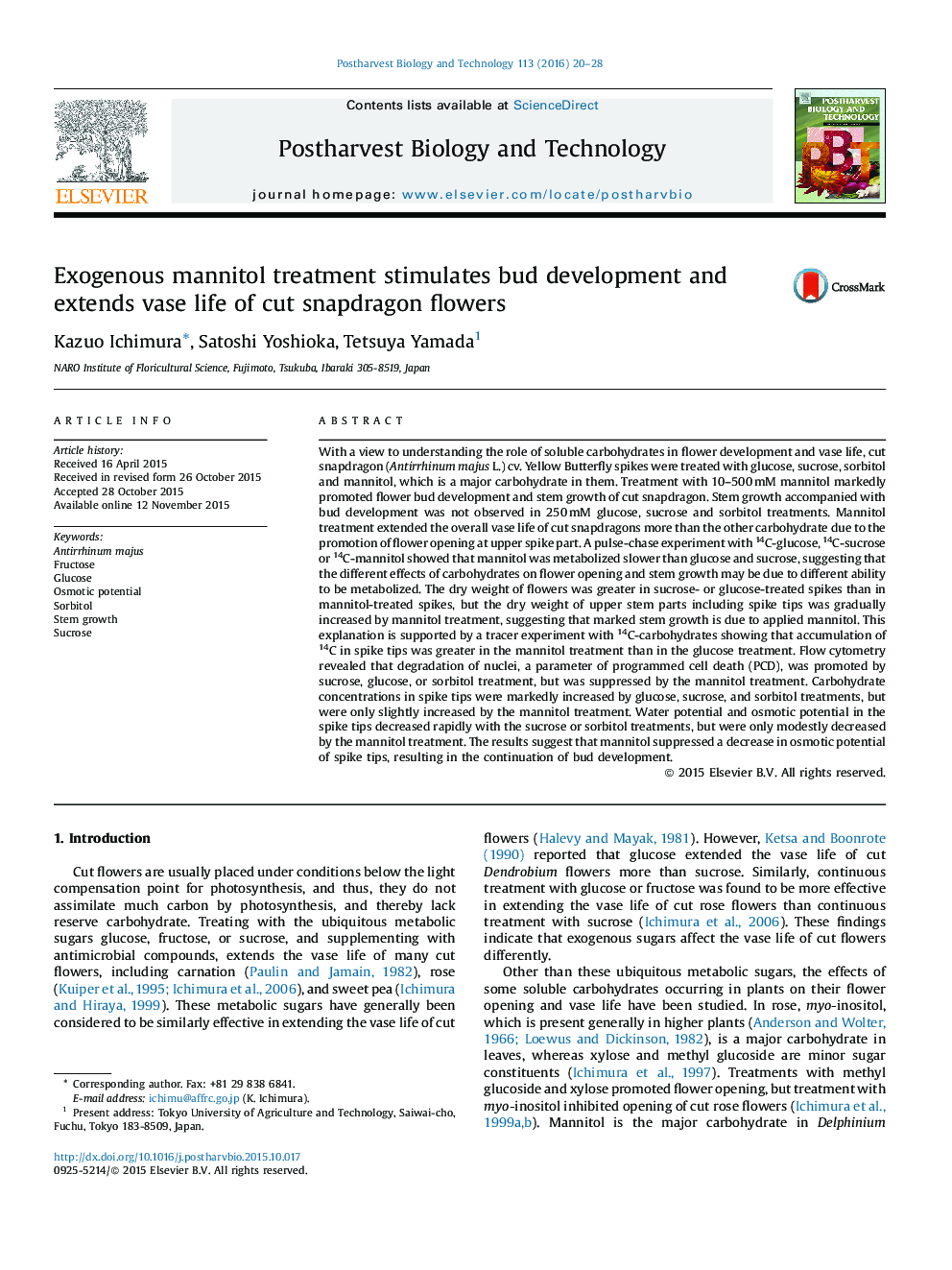| Article ID | Journal | Published Year | Pages | File Type |
|---|---|---|---|---|
| 4517832 | Postharvest Biology and Technology | 2016 | 9 Pages |
•Mannitol treatment specifically promoted flower bud development and stem growth.•Degradation of nuclei, a parameter of PCD, was suppressed by mannitol treatment.•Mannitol treatment suppressed increase in carbohydrate levels of spike tips.•Mannitol treatment moderately decreased water and osmotic potential of spike tips.•The specific mannitol action is attributed to the trends in the carbohydrate levels.
With a view to understanding the role of soluble carbohydrates in flower development and vase life, cut snapdragon (Antirrhinum majus L.) cv. Yellow Butterfly spikes were treated with glucose, sucrose, sorbitol and mannitol, which is a major carbohydrate in them. Treatment with 10–500 mM mannitol markedly promoted flower bud development and stem growth of cut snapdragon. Stem growth accompanied with bud development was not observed in 250 mM glucose, sucrose and sorbitol treatments. Mannitol treatment extended the overall vase life of cut snapdragons more than the other carbohydrate due to the promotion of flower opening at upper spike part. A pulse-chase experiment with 14C-glucose, 14C-sucrose or 14C-mannitol showed that mannitol was metabolized slower than glucose and sucrose, suggesting that the different effects of carbohydrates on flower opening and stem growth may be due to different ability to be metabolized. The dry weight of flowers was greater in sucrose- or glucose-treated spikes than in mannitol-treated spikes, but the dry weight of upper stem parts including spike tips was gradually increased by mannitol treatment, suggesting that marked stem growth is due to applied mannitol. This explanation is supported by a tracer experiment with 14C-carbohydrates showing that accumulation of 14C in spike tips was greater in the mannitol treatment than in the glucose treatment. Flow cytometry revealed that degradation of nuclei, a parameter of programmed cell death (PCD), was promoted by sucrose, glucose, or sorbitol treatment, but was suppressed by the mannitol treatment. Carbohydrate concentrations in spike tips were markedly increased by glucose, sucrose, and sorbitol treatments, but were only slightly increased by the mannitol treatment. Water potential and osmotic potential in the spike tips decreased rapidly with the sucrose or sorbitol treatments, but were only modestly decreased by the mannitol treatment. The results suggest that mannitol suppressed a decrease in osmotic potential of spike tips, resulting in the continuation of bud development.
